Irrigating your plot. Mastering water collection, storage and use on your allotment.

Water can be one of the big limiting factors on allotments as they don't often have a mains supply. If you’ve ever cursed a dry spell or wrestled with a hose, you’ll get it.
Table of Contents
Relying on mains water isn’t always practical. Some allotment sites have restricted water access, and even when they don’t, frequent use can be costly or unsustainable.
Collecting rainwater gives you a free, eco-friendly alternative while reducing strain on communal resources. Plus, plants actually prefer rainwater over treated tap water.
Water collection and storage matters:
Allotments need water to thrive. Plants use water for growth, and dry soil stunts crops.
I learned this very early on with lettuce, it wilted during a heatwave and then bolted strait to seed the week after.
- Save Water: Collecting rainwater saves you time and money and is a sustainable way to reduce your water consumption and your reliance on the mains supply.
- Cost Savings: Less water used from the tap means lower water bills. Who doesn't love saving a few quid?
- Healthier Plants: Rainwater is naturally soft and slightly acidic, which many plants prefer. It's like giving them a refreshing spa treatment!
- Convenience: Having a water source readily available on your allotment saves you time and effort. No more trudging back and forth with heavy watering cans.
Below: Mulch is my friend. I cover all my bare soil with something, either black plastic or wood shavings.
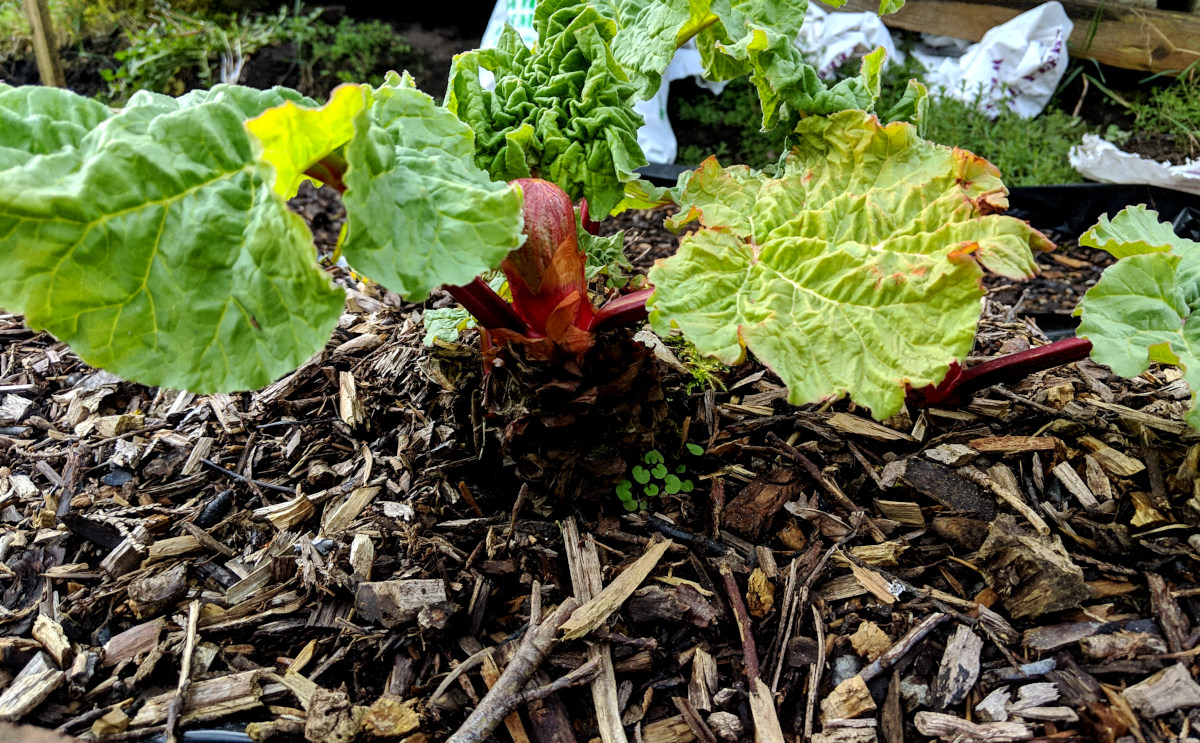
A good layer of mulch can save 40% to 50% of your water usage on the allotment. And it rots to provide nutrients over time.
How to store water safely:
You do need to be careful with water storage, a 44-gallon barrel of water would weigh at least 166.54 kilograms and if you have a reservoir dug into the ground like I do it is a drowning hazard for both wildlife and humans.
Storing water prevents shortages and it keeps your plot hydrated during dry spells.
I learned very quickly that an uncovered water barrel very quickly goes green, becomes infested with mosquitoes and fills up with leaves an other crap so some sort of lid is a necessity.
Below: The 1000 litre food container is the largest water butt you could safely have on an allotment.

I also keep chickens which drown in a heartbeat when the get into a water butt so a cover or lid is an essential to keep wildlife and pets safe as well.
Safe water storage tips for the garden:
- Use lidded containers to stop bugs and algae.
- Use food grade plastic.
- Make sure they are level and have safe easy access.
- Store in shade to slow evaporation and prevent deterioration of the plastic from sunlight.
- Check for leaks—water escapes faster than a cat at bath time.
- Cheap options work, but quality lasts longer.
- Choose the right size and shape of water container.
- Install some sort of rainwater harvesting system.
- If you have a pond or reservoir, make sure it's safely fenced off, especially if you have children or pets.
- Regularly clean your storage containers (in winter) to prevent the buildup of algae and other nasties.
- Angle gutters correctly to ensure water flows efficiently into your storage container.
If space is tight, consider sinking a storage tank underground. It is more work but keeps water cool and reduces evaporation.
Positioning:
You won't be able to move them when they are full so plan ahead when first clearing your plot.
Place water butts on level ground that has been compacted a little so as they don't lean or fall over.
Below: Try to avoid frost or freezing pockets as ice can split pipes and burst water butts.
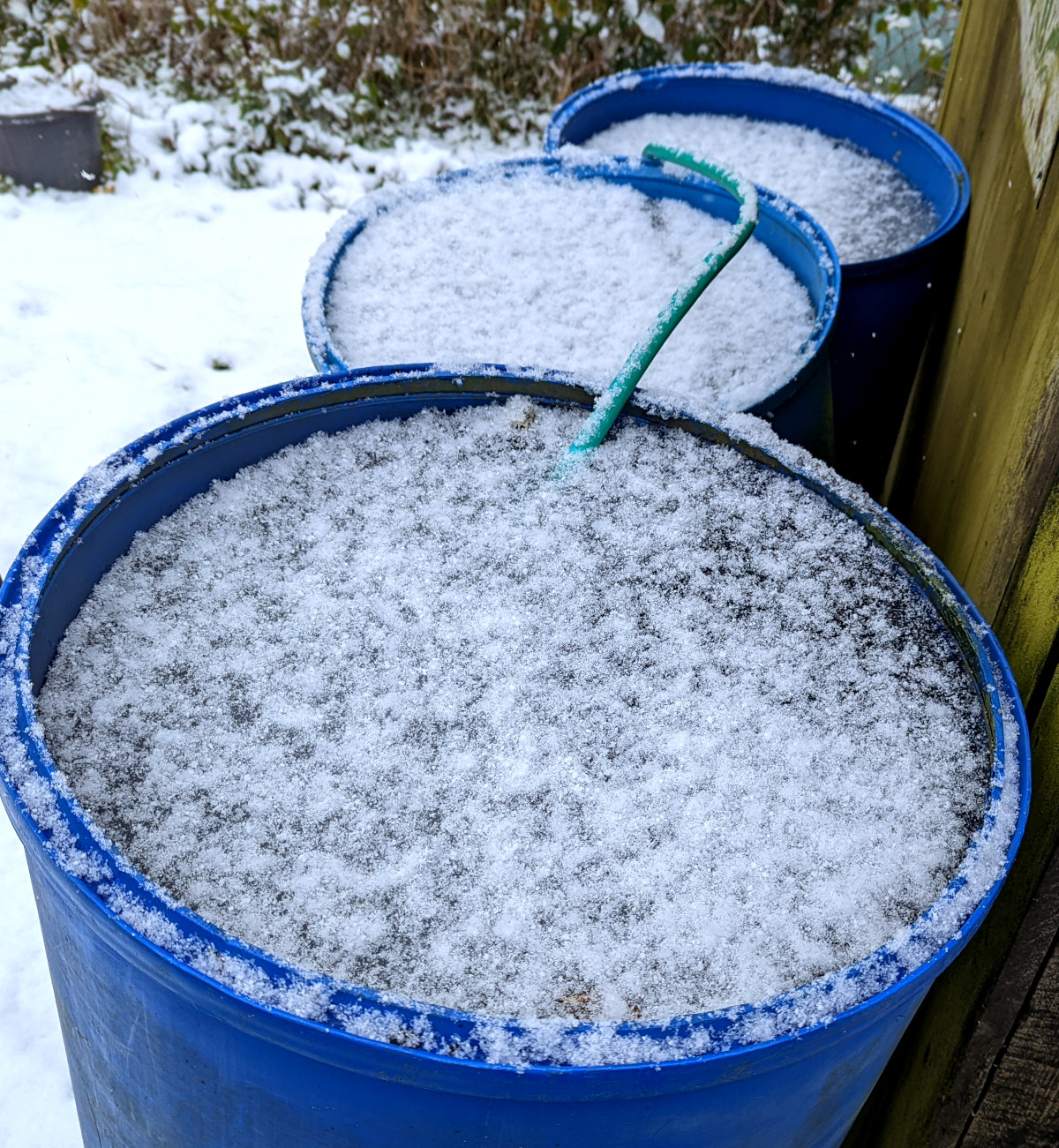
Water Butts: (100 to 250 litres in size) These are the classic choice for allotment gardeners. They come in various sizes and are relatively inexpensive. I recommend getting one with a tap at the bottom for easy access.
IBC Containers (Intermediate Bulk Containers): (500 or 1000 litres) These large plastic containers with a metal cage on the outside are a great option for storing larger volumes of water and have a in built tap at the base. They're often available second-hand, but make sure they haven't been used to store anything harmful. Clean them thoroughly before use and take great care they weight 1100 kg when full and can be dangerous.
Ponds or Reservoirs: (1 + cubic metres) If you have the space, you could create a small pond or reservoir to store water. Aside from the work the only cost is a pond liner
Below: This is my water reservoir, they should be covered and safe.
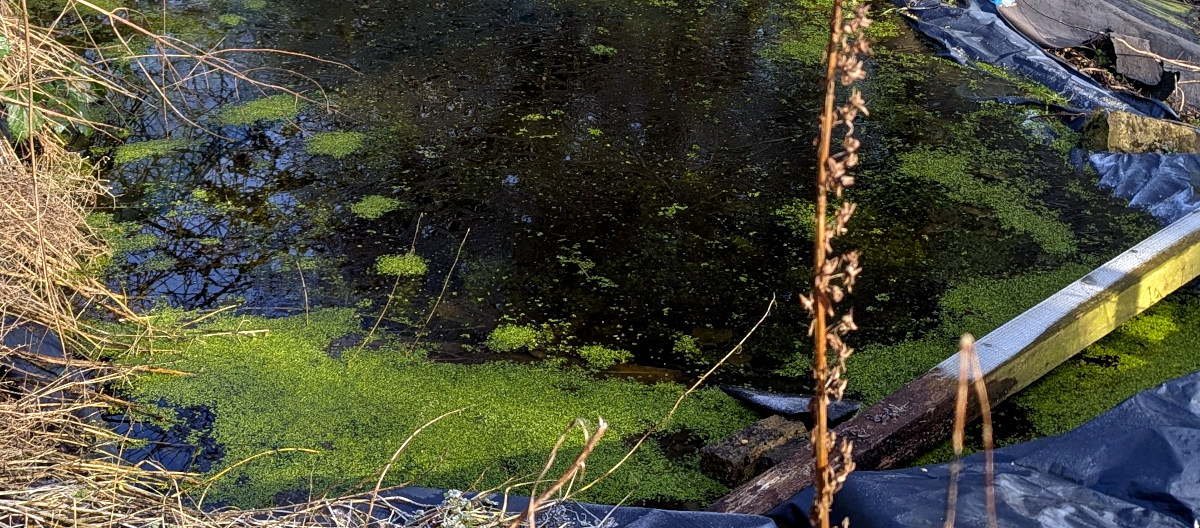
This can also attract wildlife to your allotment and you need to make sure wildlife can get out if it needs to. Mine is close to 6 cubic metres in size.
Barrels: (164 litres) Large barrels can be repurposed for water storage. Again, ensure they're clean and food-grade if you plan to use the water for edible plants.
Getting the water to the plants:
Other than a hose pipe I use very few watering systems on my allotment although I have tested them all over the years. I prefer to do it manually and control exactly how much water I use. If you regularly holiday during the growing season you will benefit from a watering system.
Watering cans are the classic choice and deliver measured amounts of water to roots. They’re gentle on young plants. I love my can for precision, but my arms hate me after 10 trips. It’s a workout!
Drip irrigation is the lazy gardener’s dream. Drip systems use pipes with holes and water plants slowly at the roots. I set one up to test last summer, and it worked fine for a few months but didn't survive the winter. It saves water and time and you can connect to a water butt for eco-friendly watering. It also becomes less effective as water levels drop in the water reservoir.
Soaker hoses leak water along their length and hydrate soil evenly. I buried one under mulch, and my tomatoes have never been happier. It’s sneaky but effective! And it stopped my tomatoes from splitting their skins in late summer.
The humble hose pipe with a human desperately sucking on one end to start a siphon flowing is a common site on allotments, mine included.
The more you make watering your plot complex by adding equipment and the like, the more scope their is for things to go wrong and waste a whole butt of water.
Adding a pump. My allotment is large and on a slope and I use a pump and a 12 volt battery to move water around on the land. You can not leave anything of real value on open allotments so it needs to be taken home after use.
All watering systems degrade over time and need yearly maintenance.
Costs:
Water collection costs vary. Reclaiming second hand materials can save an awful lot of time and money.
Cost of water butts and barrels - Expect to pay:
- Small water butts (100-150 litres): £30 to £70.
- Larger water butts (200-300 litres): £70 to £150.
- Extra-large water tanks (500+ litres): £150 to £300 or more, depending on material and capacity.
A basic rainwater harvesting system bought new will cost from £100 to £300 for a small to medium-sized setup, including guttering, downspout, filter, and a water butt.
Below: I spent £40 on a butt and gutter setup for an old greenhouse, and it paid for itself in one dry summer. No more tap water guilt! It needs a bit of post winter TLC
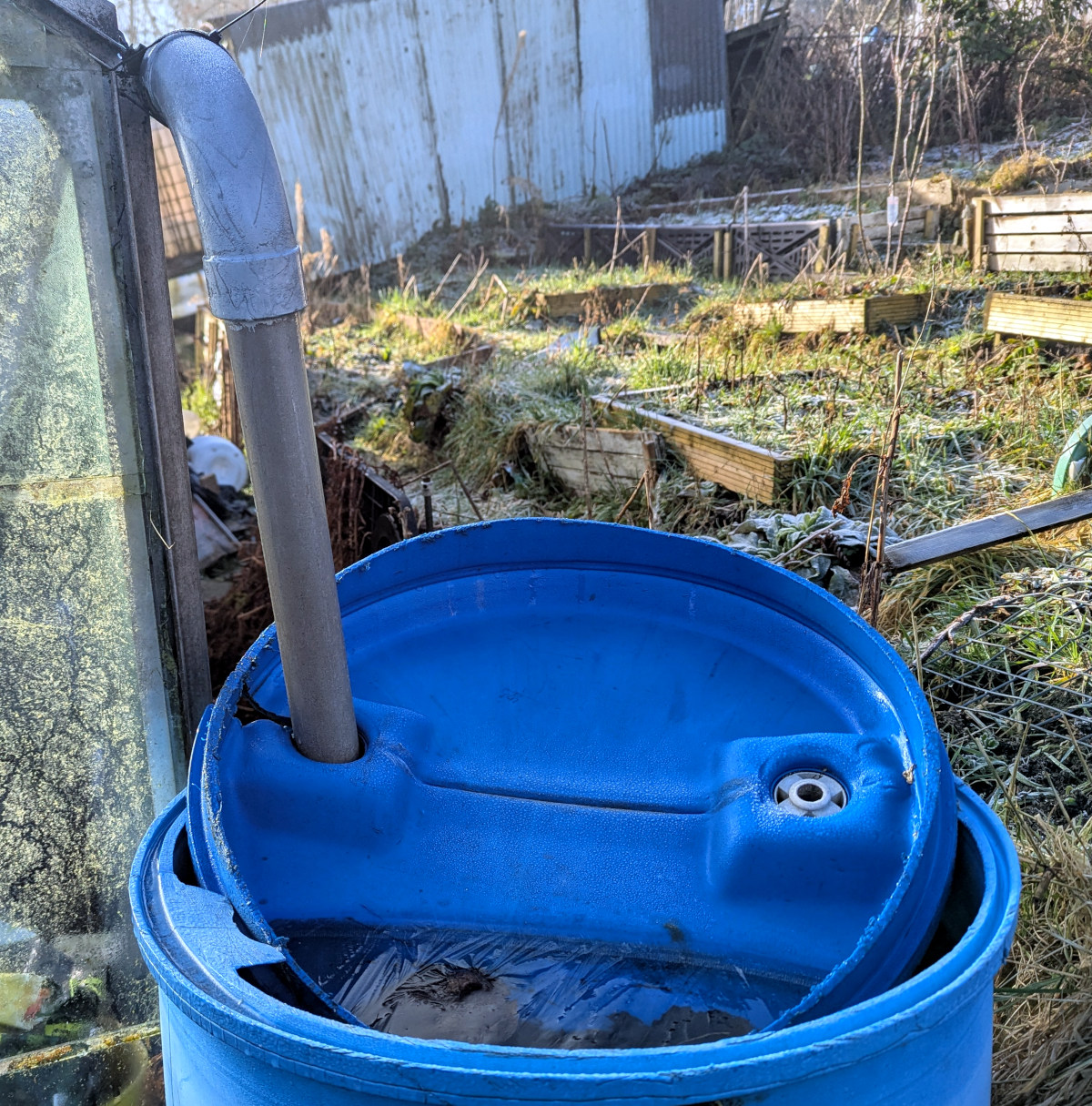
Pro tip: Look for second-hand butts or food containers online—they’re often a steal.
I dug a pond which holds nearly 6 cubic metres of water and aside from the time it took me, the only cost was a black pond liner.
A simple drip irrigation system for a small allotment might cost between £50 to £150. The one I tested a few years ago was just shy of £100.
A basic pump for a water butt might cost around £30 to £100. Hoses for watering plants can cost an additional £10 to £30 depending on length and material.
Ways to save water on the plot:
Collecting water is half the battle. Using it wisely keeps crops happy.
I’ve botched watering more times than I care to admit.
Below: Don't be afraid to use black plastic (or any other mulch) as ground cover to cut down on water loss from the soil. I cover all the ground in my polytunnels and greenhouses.
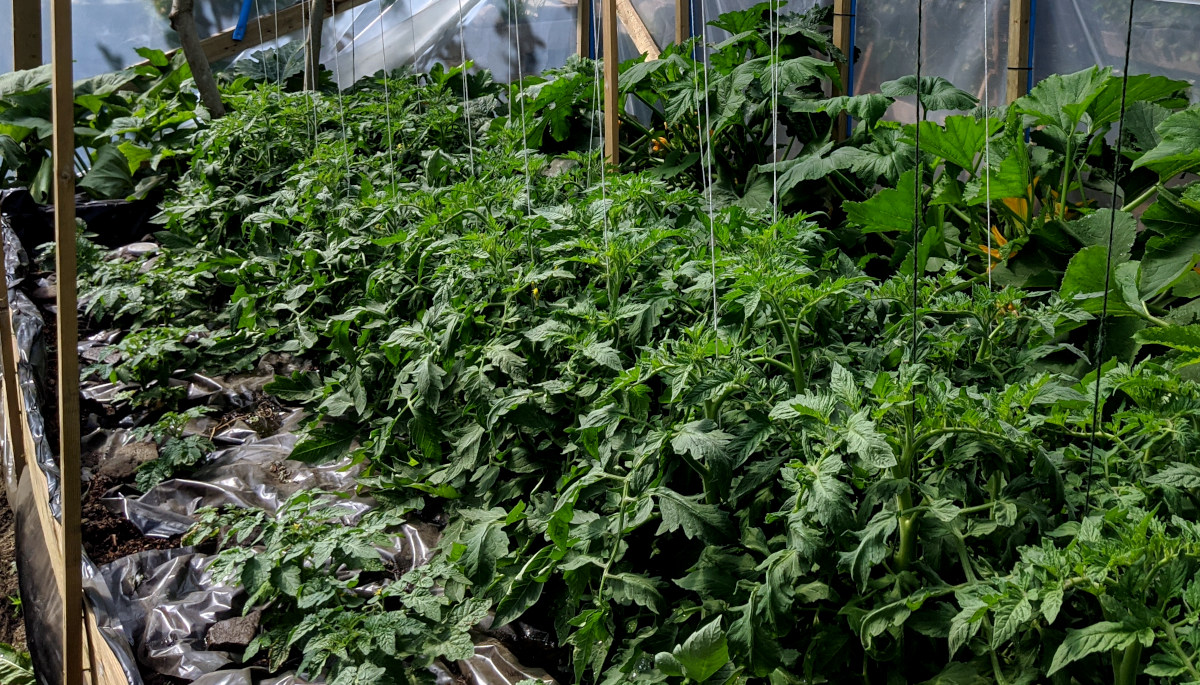
Tips for saving water on allotments:
Avoid overwatering: I have drowned plants more than once. Soggy soil kills roots. Let it dry between watering. Overwatered plants are much more likely to have a shallow root system and suffer in dry spells.
Plant deep: Many crops like tomatoes benefit from being planted deep in the soil.
Water less often. Give plants a thorough soaking and allow to dry a little in between to encourage deep rooting.
Uncovered storage: Mosquitoes love open water. I learned this after a bite-fest.
Avoid midday watering: The sun burns wet leaves on some plants and you can scorch leaves. Much better to water in the cool of the morning or evening
Do a simple check first: Test soil with your finger. If it’s damp 2 cm down, skip watering.
Choose which plants you water: Some crops do better with regular water while some are okay with being left to dry a little at the roots. All members of the onion family have deep roots and cope well with dryer weather.
Bury pots in the ground in hot weather. This can help keep the cooler and reduce evaporation
What to do when its all gone tits up!
Every now and again we have long dry spells, or someone left a tap on, or the vandals have been in and tipped the butt over. The net result is a local drought!
This can be a real problem if it is early in the growing season as everything still has shallow roots and has yet to become established.
The only real solution for this is to carry water to the allotment in some way.
I have a 250 litre plastic water carry that fits in my boot. This is a large moulded plastic box with a tap and a filling hole in the top. 250 litres is the maximum size that is safe to transport in a standard car.
If the water situation is critical, prioritise watering plants that need it the most, usually young plants, seedlings, or those that are fruiting. You can also focus on the plants that are most likely to survive with less water, such as drought-tolerant varieties.
Consider getting together with the other plot holders to organise a community water supply.
